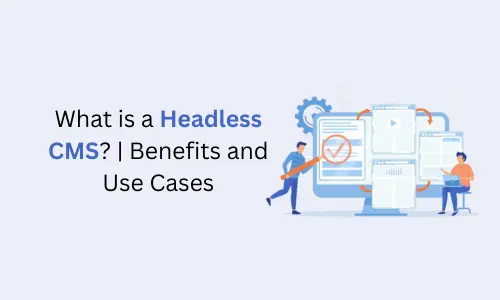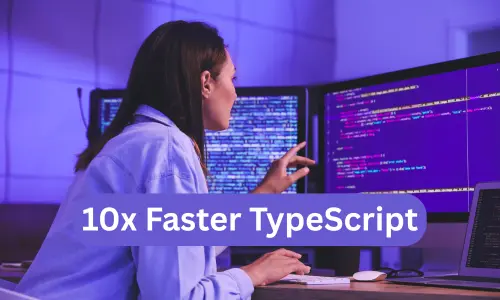What is a Headless CMS? | Benefits and Use Cases

Google Add Markup Support for Loyalty Programs
June 11, 2025
OpenAI Launched o3-pro Model| A New Benchmark in AI Reasoning
June 18, 2025A headless CMS is revolutionizing how businesses manage and deliver content in today’s fast-paced digital world. Unlike traditional content management systems that tie content creation to a specific front-end display, a headless CMS separates the back-end content storage from the front-end presentation layer. This decoupling offers unparalleled flexibility, enabling developers and marketers to create dynamic, multi-channel experiences with ease. Whether you’re a business owner, developer, or content creator, understanding the potential of this technology can transform your digital strategy.
This article explores what a headless CMS is, its key benefits, and practical use cases that highlight its value across industries. Let’s dive into why this approach is gaining traction and how it can empower your organization.
Understanding the Headless CMS Concept
What Makes It “Headless”?
A headless CMS focuses solely on the back-end, where content is created, stored, and managed. The “headless” term refers to the absence of a built-in front-end or presentation layer. Instead of dictating how content appears on a website or app, it delivers raw content via APIs (Application Programming Interfaces). Developers can then use this content to build customized front-end experiences across websites, mobile apps, smart devices, and more.
How It Differs from Traditional CMS
Traditional CMS platforms, like WordPress or Drupal, combine content management with front-end templates, often limiting flexibility. For example, changing the design or adding new channels (like a mobile app) can require significant rework. A headless CMS eliminates these constraints by providing content in a format that’s agnostic to the delivery platform, making it ideal for modern, multi-channel strategies.
Key Benefits of Using a Headless CMS
Adopting a headless CMS offers numerous advantages, from enhanced flexibility to improved performance. Below are the primary benefits that make it a go-to choice for businesses.
Unmatched Flexibility for Developers
Developers love the freedom a headless CMS provides. Since the front-end is decoupled, they can use any programming language, framework, or tool—React, Vue.js, Angular, or even emerging technologies—to craft the user interface. This flexibility ensures that the end product aligns perfectly with the brand’s vision and user expectations.
Seamless Multi-Channel Content Delivery
Today’s audiences engage with brands across multiple touchpoints: websites, mobile apps, wearables, voice assistants, and even IoT devices. A headless CMS enables content to be delivered consistently to all these channels through APIs. For instance, a single piece of content can power a blog post, an app notification, and a smartwatch alert without needing separate management systems.
Faster Time-to-Market
With a headless CMS, developers can work on the front-end while content creators simultaneously manage the back-end. This parallel workflow reduces development time, allowing businesses to launch projects faster. Additionally, reusable APIs mean new channels or features can be added quickly without overhauling the entire system.
Enhanced Scalability and Performance
A headless CMS is inherently scalable, as it’s designed to handle high volumes of content requests across platforms. By leveraging modern front-end frameworks and content delivery networks (CDNs), it ensures fast load times and a smooth user experience, even during traffic spikes.
Future-Proof Technology
Technology evolves rapidly, and a headless CMS is built to adapt. Since it’s not tied to a specific front-end, businesses can refresh their designs or adopt new platforms without disrupting the content repository. This future-proofing minimizes long-term costs and keeps brands competitive.
Improved Security
By separating the content management layer from the public-facing front-end, a headless CMS reduces the attack surface for potential cyber threats. The back-end can be hosted on secure servers, and APIs can include robust authentication protocols, enhancing overall security.
Practical Use Cases for a Headless CMS
The versatility of a headless CMS makes it suitable for a wide range of industries and applications. Here are some real-world use cases that showcase its impact.
E-Commerce Platforms
E-commerce businesses thrive on delivering personalized, omnichannel experiences. A headless CMS allows retailers to manage product descriptions, images, and promotions in one place while delivering tailored content to websites, mobile apps, and social media marketplaces. For example, a fashion brand can use the same content for its online store, Instagram shop, and in-store digital kiosks.
Media and Publishing
Publishers need to distribute content across websites, apps, newsletters, and syndication platforms. A headless CMS streamlines this process by centralizing content management and enabling seamless delivery to multiple channels. A news outlet, for instance, can push breaking news to its website, app, and smart TV platforms simultaneously.
Corporate Websites and Blogs
Businesses with complex websites or blogs benefit from the flexibility of a headless CMS. Marketing teams can create and update content without relying on developers, while the front-end team can design engaging, responsive interfaces. This separation empowers faster content updates and a consistent brand experience.
Mobile and Web Applications
App developers often need content that’s dynamic and easy to update. A headless CMS provides a single source of truth for app content, such as onboarding tutorials, FAQs, or in-app notifications. This approach simplifies content updates and ensures consistency across iOS, Android, and web versions.
IoT and Smart Devices
The rise of IoT devices, like smart speakers and connected appliances, demands content delivery beyond traditional screens. A headless CMS can feed content to these devices via APIs, enabling brands to engage users in innovative ways. For example, a recipe app could deliver instructions to a smart oven or a voice assistant.
Global Brands with Localized Content
Multinational companies need to deliver localized content to diverse audiences. A headless CMS supports this by allowing content creators to manage translations and regional variations in one system. The content can then be delivered to region-specific websites, apps, or campaigns, ensuring cultural relevance and consistency.
Challenges to Consider
While a headless CMS offers significant advantages, it’s not without challenges. Businesses must invest in skilled developers to build and maintain the front-end, as the system doesn’t provide out-of-the-box templates. Additionally, the initial setup may require more time and resources compared to traditional CMS platforms. However, the long-term benefits often outweigh these hurdles, especially for organizations prioritizing scalability and innovation.
Choosing the Right Headless CMS
Selecting a headless CMS depends on your business needs, budget, and technical expertise. Popular options include Contentful, Strapi, and Sanity, each offering unique features like real-time collaboration, customizable workflows, or open-source flexibility. Evaluate factors like ease of use, API performance, and integration capabilities to find the best fit.
Why a Headless CMS is the Future of Content Management
The digital landscape demands agility, personalization, and seamless user experiences. A headless CMS meets these demands by offering a flexible, scalable, and future-ready solution for content management. Whether you’re launching a new e-commerce store, scaling a media platform, or building an IoT ecosystem, this technology empowers you to deliver content wherever your audience is.
By embracing a headless CMS, businesses can stay ahead of the curve, reduce development bottlenecks, and create engaging experiences across every channel. As consumer expectations evolve, adopting this approach ensures your brand remains competitive and adaptable in an ever-changing digital world.


